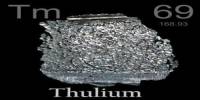A superconductor is a material capable of conducting electricity with no resistance. This means that when the conductors become superconductors below the critical temperature, there will be no energy loss due to heat, sound, or other factors. To become a superconductor, the majority of the materials must be at extremely low temperatures. Materials that will behave as semiconductors at higher temperatures are being researched. At the moment, an excessive amount of energy is wasted in the cooling process when manufacturing semiconductors, making it inefficient and uneconomical.
An international team of researchers led by scientists from the University of Minnesota Center for Quantum Materials made a surprising discovery: deformations in quantum materials that cause imperfections in the crystal structure can actually improve the material’s superconducting and electrical properties.
The ground-breaking discoveries could provide new insights into the development of the next generation of quantum-based computing and electronic devices. Nature Materials, a peer-reviewed scientific journal published by Nature Publishing Group, published the study recently.
In a surprising discovery, an international team of scientists found that deformations in quantum materials that cause imperfections in the crystal structure can actually improve the material’s superconducting and electrical properties.
“Quantum materials have unusual magnetic and electrical properties that, if understood and controlled, have the potential to revolutionize virtually every aspect of society by enabling highly energy-efficient electrical systems and faster, more accurate electronic devices,” said study co-author Martin Greven, Distinguished McKnight Professor in the University of Minnesota’s School of Physics and Astronomy and Director of the Center for Quantum Materials. “The ability to tune and modify the properties of quantum materials is critical to advances in fundamental research as well as modern technology.”
Elastic deformation of materials occurs when a material is stressed but returns to its original shape after the stress is removed. Plastic deformation, on the other hand, is the irreversible change in the shape of a material in response to applied stress – or, more simply, the act of squeezing or stretching it until it loses its shape. For thousands of years, blacksmiths and engineers have used plastic deformation. Wet chewing gum, which can be stretched to dozens of times its original length, is an example of a material with a wide plastic deformation range.

The extraordinary properties of superconducting materials make them extremely important for modern technology. The research to understand and use the extraordinary properties of superconductors in various fields of technology is still ongoing.
While elastic deformation has been widely used in the study and manipulation of quantum materials, the effects of plastic deformation have yet to be investigated. In fact, conventional wisdom holds that “squeezing” or “stretching” quantum materials may remove their most intriguing properties.
In this groundbreaking new study, the researchers used plastic deformation to create extended periodic defect structures in strontium titanate, a well-known quantum material (SrTiO3). The defect structures altered the electrical properties and increased superconductivity.
“We were pleasantly surprised by the results,” Greven said. “We went into this thinking that our methods would completely destroy the material. We would never have guessed that these flaws would actually improve the materials’ superconducting properties, which means that it could carry electricity without wasting any energy at low enough temperatures.”
According to Greven, this study demonstrates the great promise of plastic deformation as a tool for manipulating and creating new quantum materials. According to him, it can lead to novel electronic properties, including materials with high potential for technological applications.
Greven also stated that the new study demonstrates the power of cutting-edge neutron and x-ray scattering probes in deciphering the complex structures of quantum materials, as well as a scientific approach that combines experiment and theory. “Scientists can now use these techniques and tools to study thousands of other materials,” Greven said. “I anticipate that we will discover a slew of new phenomena along the way.”
The transition from normal conductivity to superconductivity is reversible. Furthermore, superconductivity can be eliminated below critical temperature by passing a sufficiently large current through the conductor itself or by applying a sufficiently strong external magnetic field. The value of current through the conductor itself below critical temperature/transition temperature at which the superconducting state is abolished is referred to as critical current. The value of critical current increases as the temperature (below the critical temperature) decreases. The value of critical current increases as temperature decreases. The value of the critical magnetic field is also affected by temperature.
















